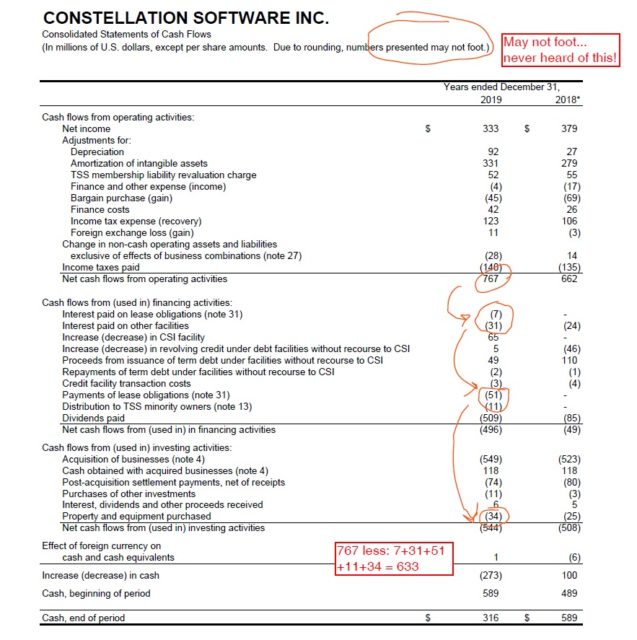There is no doubt that (TSX: CSU) is well-managed and the CEO’s instincts on return on investment from acquisitions is spot-on. Software has a “sticky” component where the cost to transition systems is so high that it creates a barrier to entry. With existing licensing regimes, it can create recurring revenues that can be increased over time (especially for institutional customers – much less price sensitive than consumers).
Glossing over the year-end results, this is what I see (from the cash flow statement) – note this is a really crude, paper-napkin styled analysis:

The balance sheet in relation is fairly neutral – they gave out $500 million in dividends in 2019 which impacted the cash balance, in addition to spending nearly $600 million on acquisitions. Despite this they still have about $100 million net cash on the balance sheet (and another roughly $250 million in lease obligations). Thus, I’ll ignore the balance sheet since this is obviously a cash flow valuated concern.
We use the $633 million number (the 2019 run-rate for free cash generation), divided by 21.2 million shares outstanding. This gives us about $30/share.
(An original post completely forgot about the fact that CSU reports in US dollars when their stock trades in CAD, so the numbers below have been corrected as appropriate, with some mild embarrassment for my own distraction as I was looking at the crude oil futures)
CSU’s last trade was at US$995 per share, which gives a 33 times valuation.
Let’s say they can grow earnings at 15% a year (ignore all the myriad forms of assumptions that would go into this), they will need about 3-4 years growth at that rate to get to a 20 times valuation with their stock price being constant.
That seems to be relatively expensive. Who knows, they might be able to grow faster than that.
CSU is good at what it does, but quality comes at a high price. The question is whether that price will get higher, either through growing the bottom line or a continued expansion of the price to cash (or earnings) ratio.

